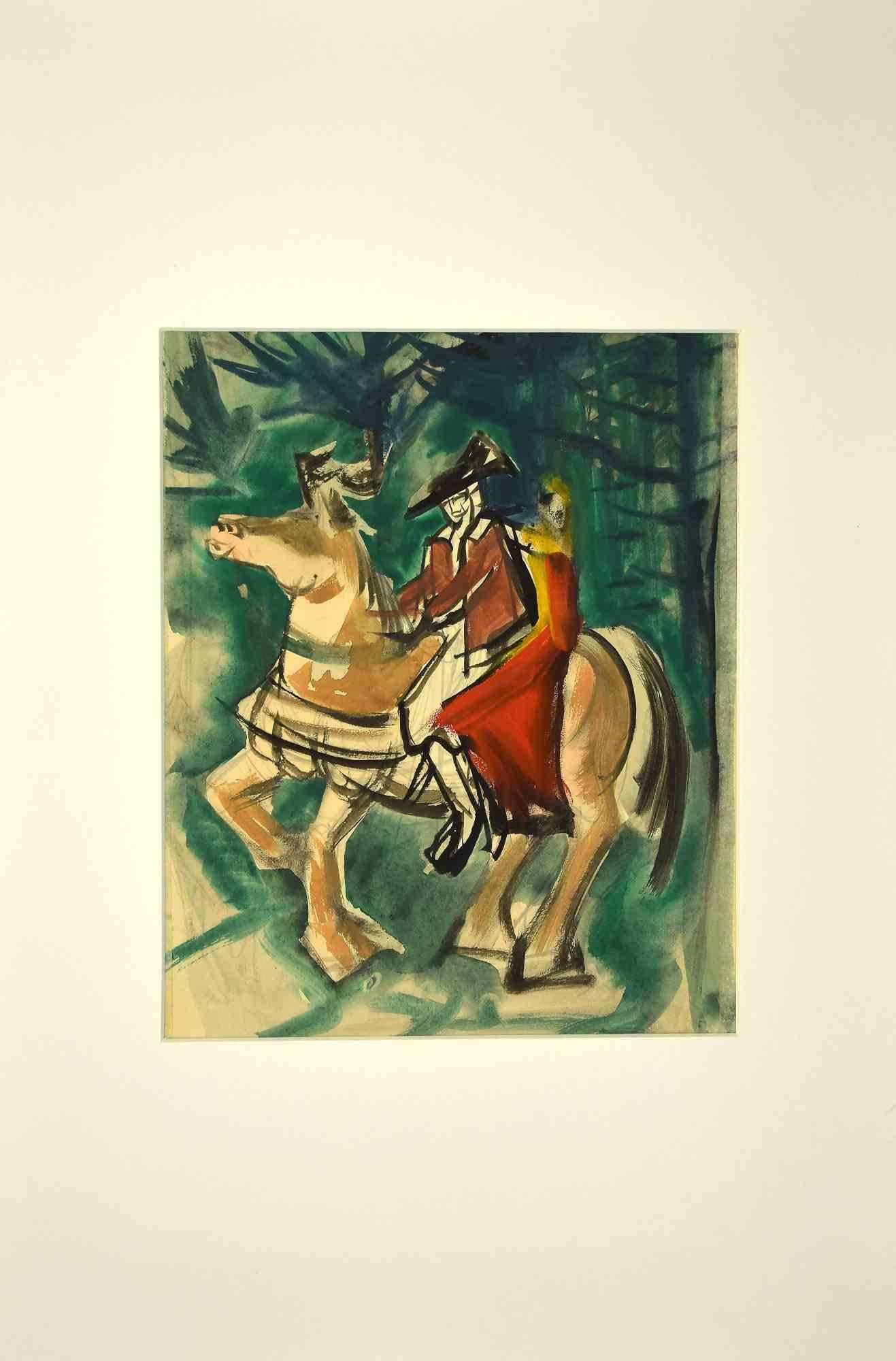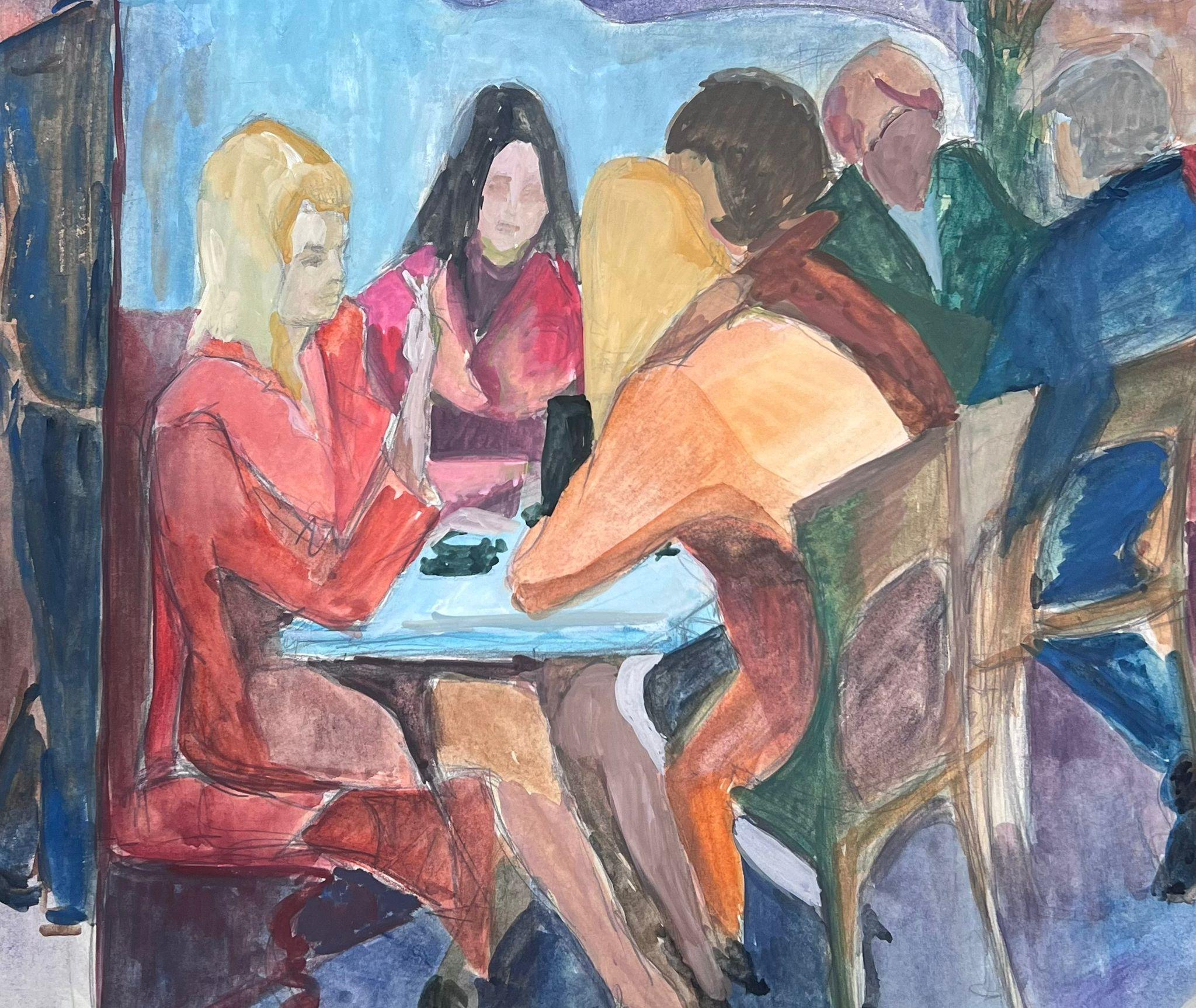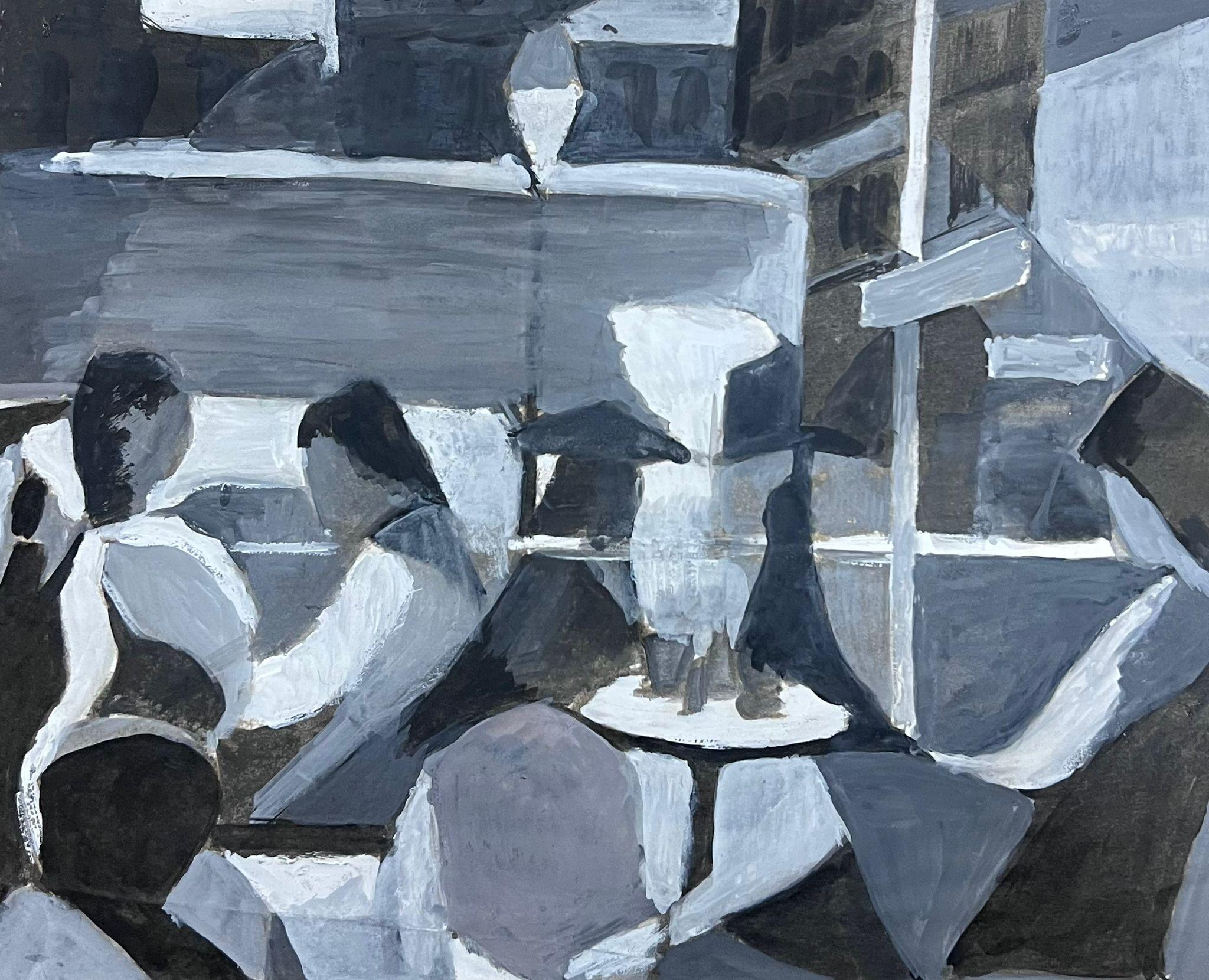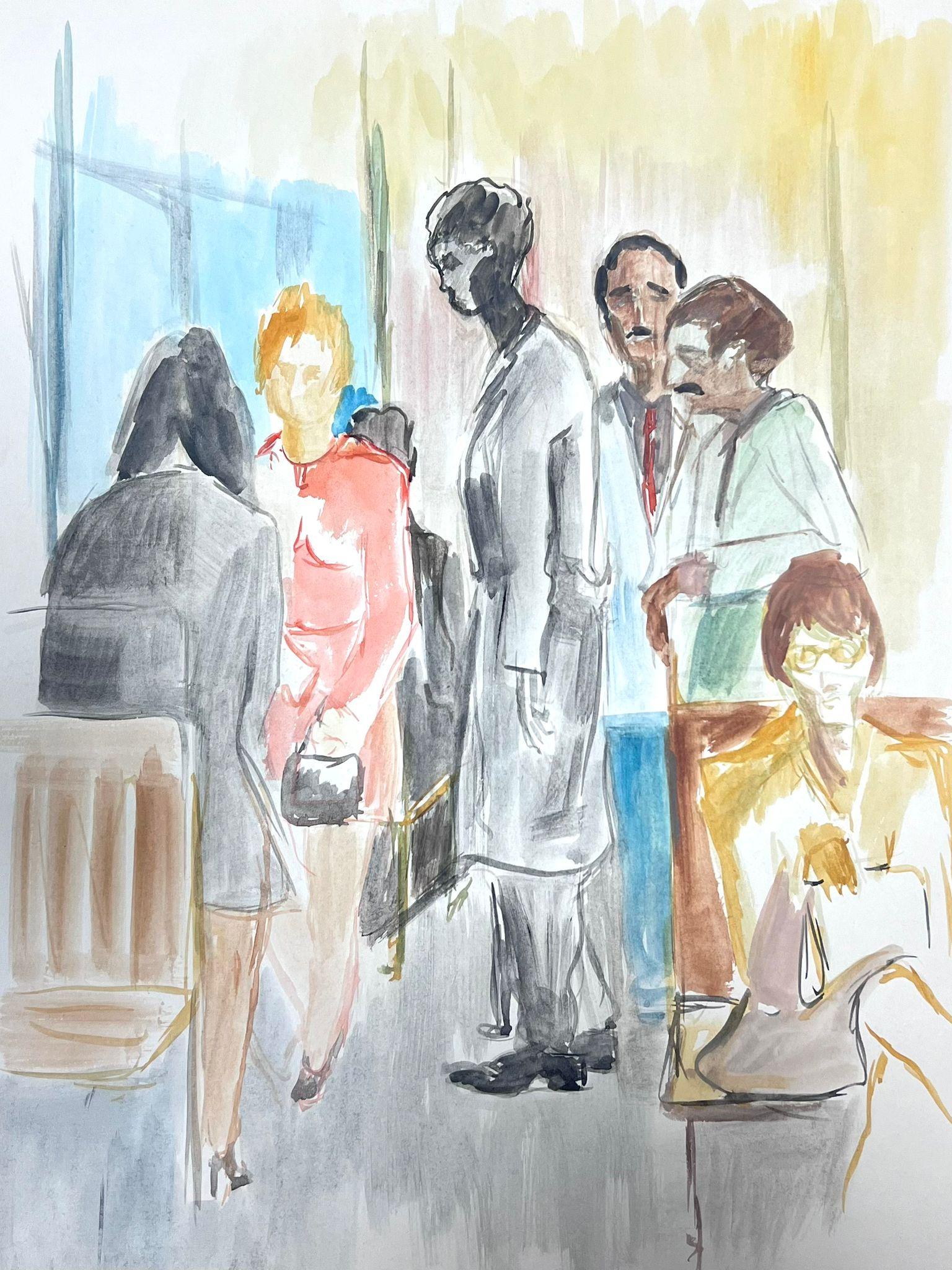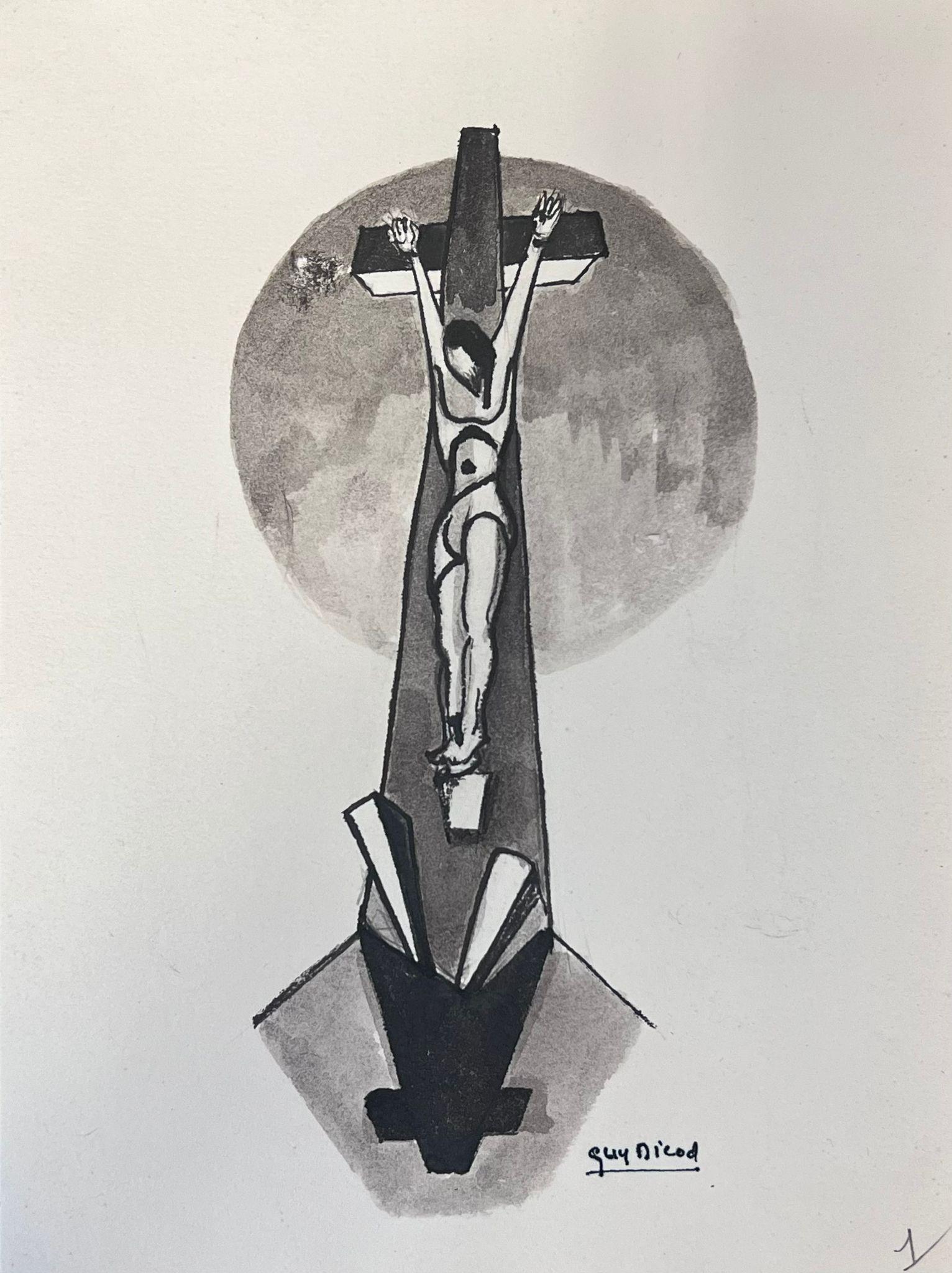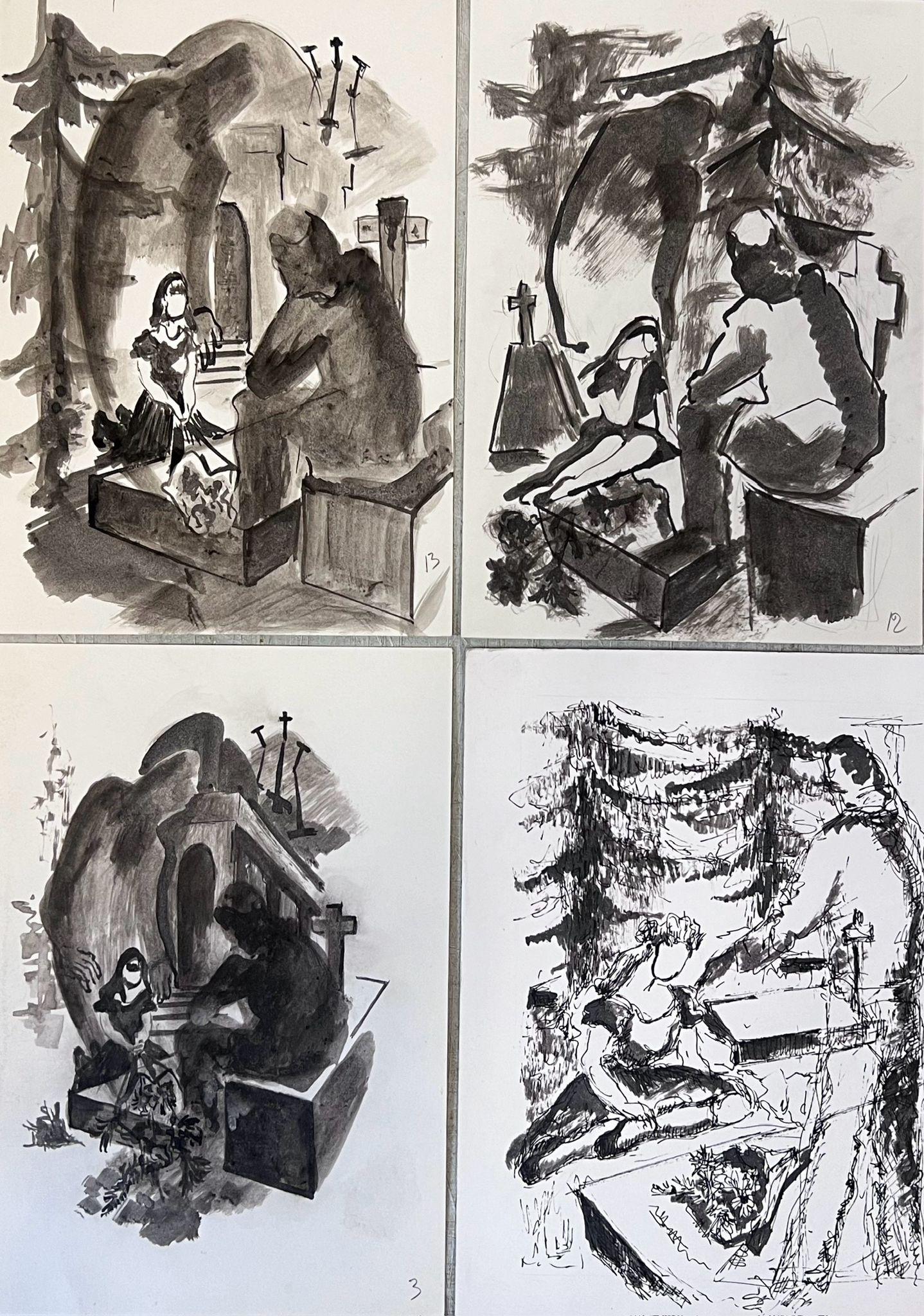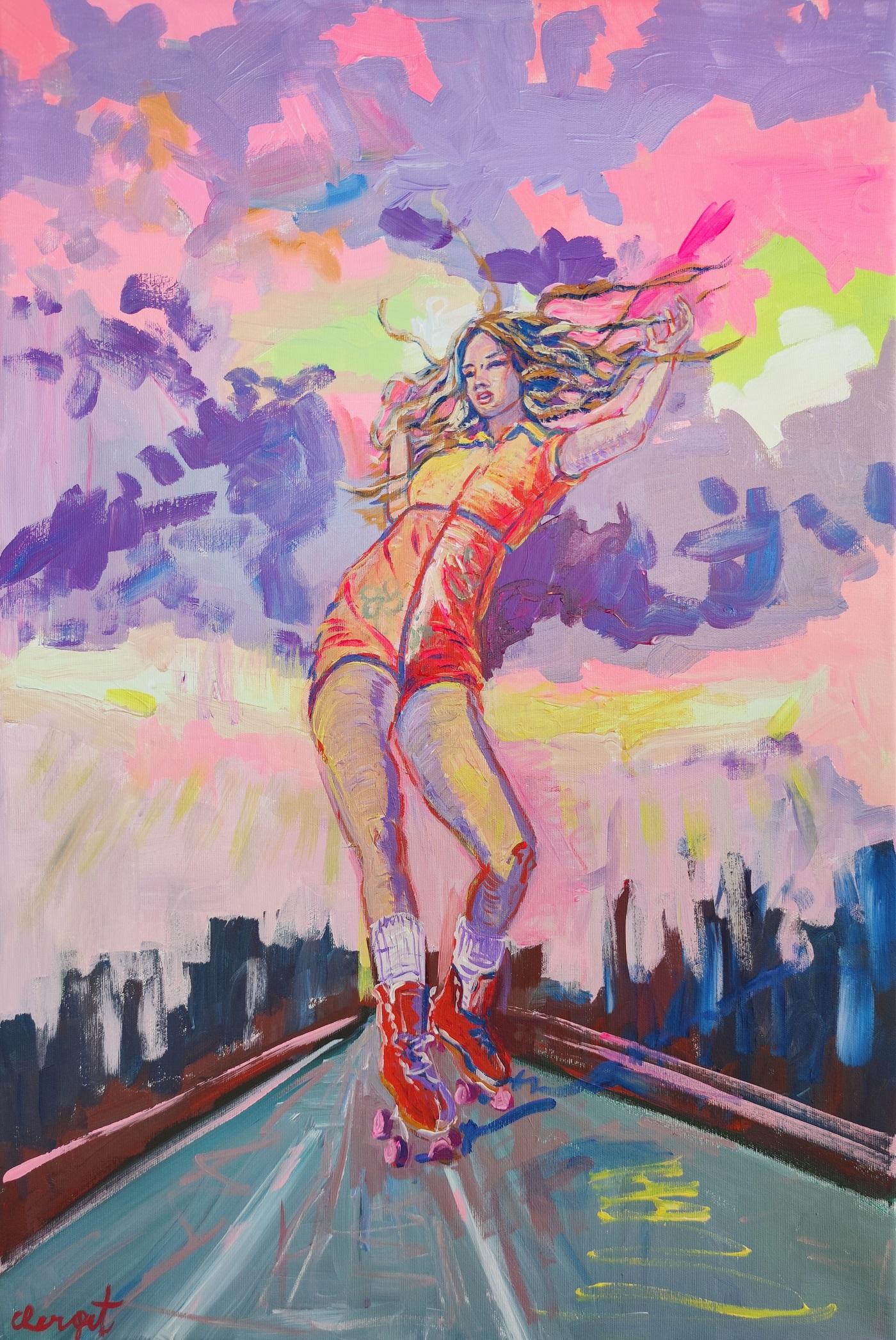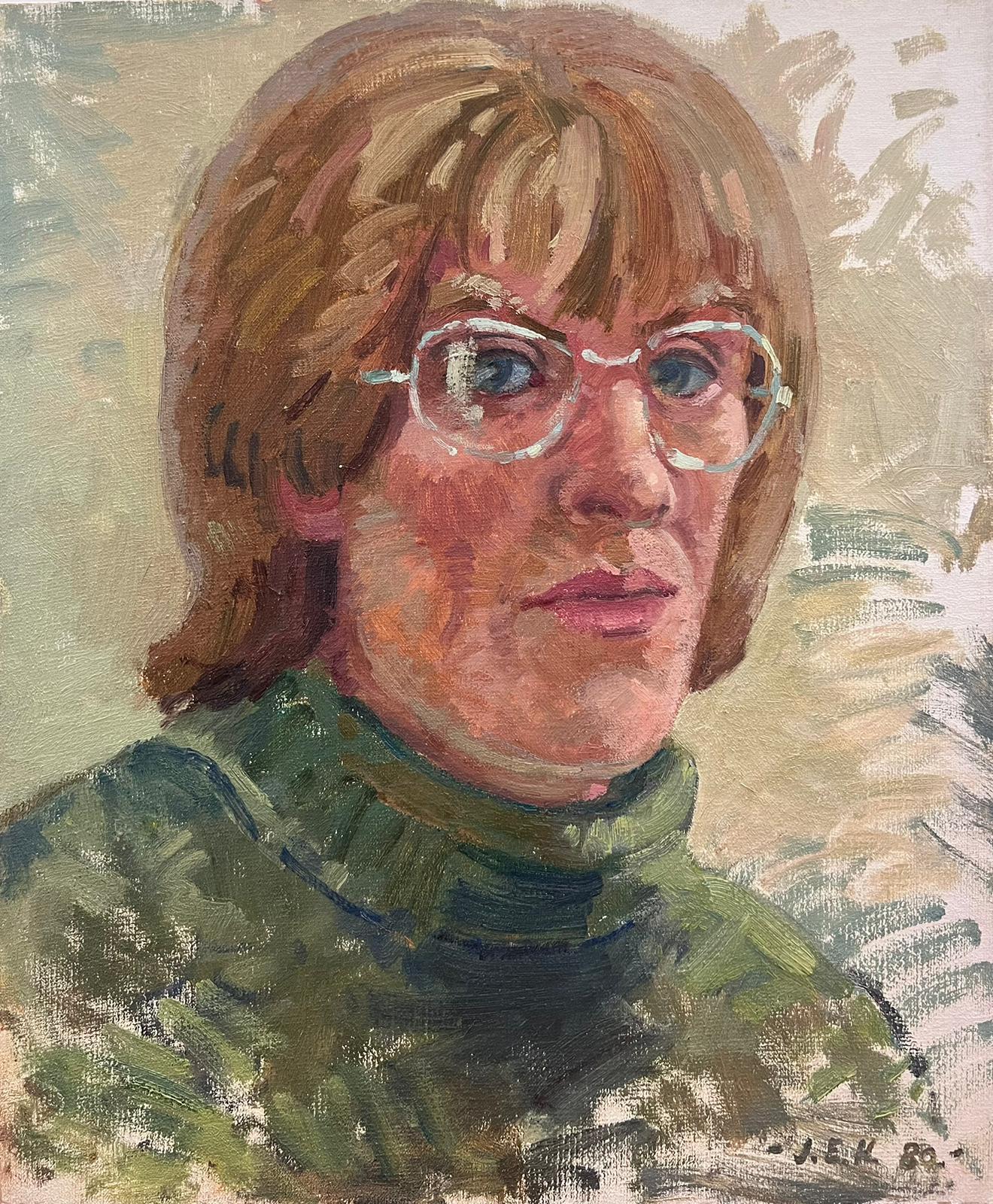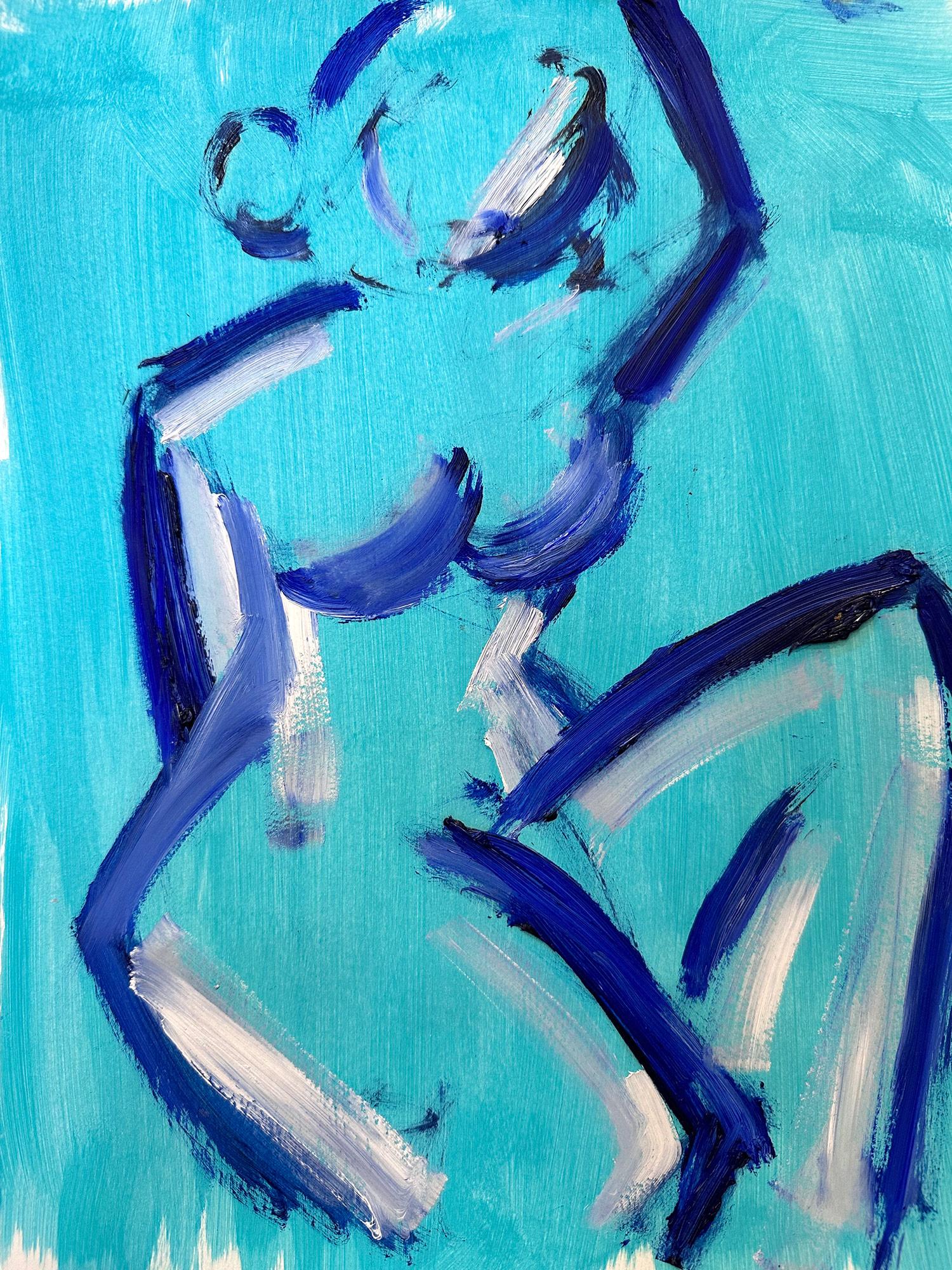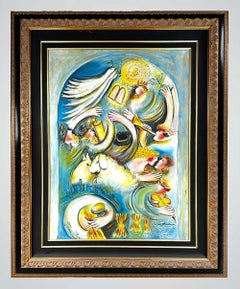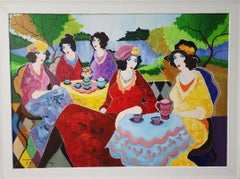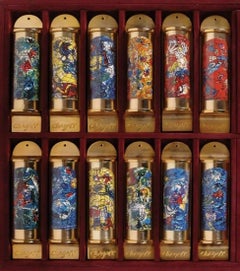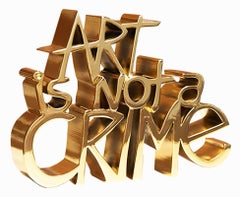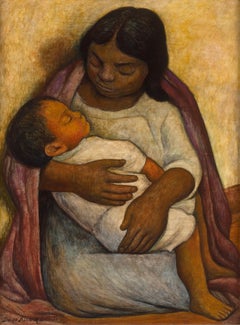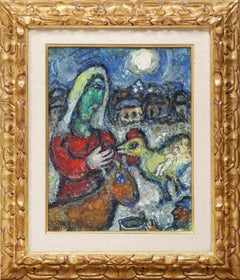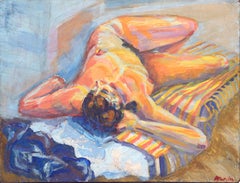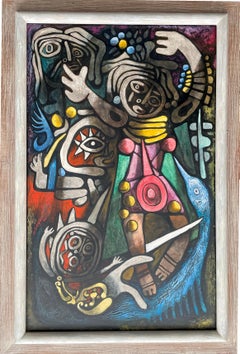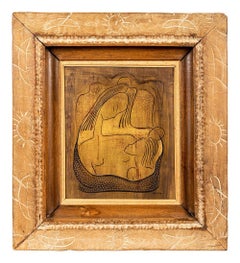
'Mother And Child, C. 1950' Original Tempera On Etched And Gold Leafed Masonite
View Similar Items
Want more images or videos?
Request additional images or videos from the seller
1 of 9
Auction endedBrowse Current Auctions
Angel Botello'Mother And Child, C. 1950' Original Tempera On Etched And Gold Leafed Masonite1950
1950
About the Item
- Creator:Angel Botello (1913-1986, Puerto Rican)
- Creation Year:1950
- Dimensions:Height: 20 in (50.8 cm)Width: 17 in (43.18 cm)Depth: 2 in (5.08 cm)
- Medium:
- Movement & Style:
- Period:
- Condition:
- Gallery Location:Pembroke Pines, FL
- Reference Number:1stDibs: LU2382212480232
Angel Botello
Ángel Botello (June 20, 1913 - November 11, 1986) was a Spanish-Puerto Rican painter, sculptor, and graphic artist. He was dubbed "The Caribbean Gauguin" for his bold colors and depictions of island life. Botello is considered one of the greatest Latin American post-modern artists, and recognition and demand for his artwork continue to grow today, fetching unprecedented auction prices. Ángel Botello was never attached to any particular artistic school or movement and was a protean artist: he developed his artistic style. Botello was a versatile and many-sided artist who worked in all creative media at his reach: oil paintings, drawing, printmaking, bronze sculptures, wood carving, photography, and mosaics.
About the Seller
4.9
Gold Seller
Premium sellers maintaining a 4.3+ rating and 24-hour response times
1stDibs seller since 2023
115 sales on 1stDibs
Typical response time: 5 hours
Authenticity Guarantee
In the unlikely event there’s an issue with an item’s authenticity, contact us within 1 year for a full refund. DetailsMoney-Back Guarantee
If your item is not as described, is damaged in transit, or does not arrive, contact us within 7 days for a full refund. Details24-Hour Cancellation
You have a 24-hour grace period in which to reconsider your purchase, with no questions asked.Vetted Professional Sellers
Our world-class sellers must adhere to strict standards for service and quality, maintaining the integrity of our listings.Price-Match Guarantee
If you find that a seller listed the same item for a lower price elsewhere, we’ll match it.Trusted Global Delivery
Our best-in-class carrier network provides specialized shipping options worldwide, including custom delivery.More From This Seller
View AllZAMY STEYNOVITZ "TRILOGY-FUTURE" OIL ON CANVAS 1976
By Zamy Steynovitz
Located in Pembroke Pines, FL
Zamy Steynovitz (Polish/Israeli, 1951 - 2000).
Title: "Triology Future"
Year: 1976
Ref: Book # 1, 1980.
Oil on Canvas, Original.
Signed and dated 1976 lower right.
Image: 40x30 inches
Framed: 54 1/2" x 44"
Condition: Excellent
provenance: The estate of Zamy Steynovitz, Fine Art Wholesaler, private collector
Zamy Steynovitz was born in Liegnitz, Poland in 1951and at a very early age he aspired to be a painter. He won first prize in an art competition for children before immigrating to Israel in 1957.
Formally educated at the Art School in Tel-Aviv and the Royal Academy in London, he completed his studies and began artistic pursuits in earnest. Zamy established his place in the art world after displaying his work in one-man exhibitions and art fairs around the world.
Zamy’s art displays chromatic and thematic richness and his choice of subjects has been strongly influenced by Jewish tradition and folklore. Additionally, his work presents general themes such as Paris cafes, still lives, flowers, circuses and landscapes.
In the early stages of his work, he used rich pastels and light brush strokes. When he visited South America in the early 1980’s, his work reflected his new surroundings and were further enhanced by local brightness and colorfulness. His art gained chromatic power; the palette became richer in tones, the textures thicker, and the background darker and more colorful. Together with these changes, the thematic persistence in his creation was maintained, allowing him to develop into a sensitive and mature artist.
Zamy’s paintings are a reflection of his Eastern-European Jewish heritage...
Category
1990s Contemporary Figurative Paintings
Materials
Canvas, Oil
$7,920 Sale Price
20% Off
Free Shipping
TARKAY, ITZCHAK "LAKE CAFE" 2000, ORIGINAL ACRYLIC ON CANVAS 36X48
By Itzchak Tarkay
Located in Pembroke Pines, FL
Artist: TARKAY, ITZCHAK
Title: LAKE CAFE
Year: 2000-2010
Size: 36 X 48 INCHES
Medium: ORIGINAL ACRYLIC ON CANVAS
Edition: ORIGINAL 1/1
Description: Hand signed by the artist.
The art...
Category
Early 2000s Art Deco Figurative Paintings
Materials
Canvas, Acrylic
MARC CHAGALL 24K, SET OF 12 TRIBE OF ISRAEL MEZUZAH
By (after) Marc Chagall
Located in Pembroke Pines, FL
ARTIST: MARC CHAGALL (after)
TITLE: THE TWELVE TRIBES SERIES set of 12
MEDIUM: Full color silkscreen on 24K gold plated bronze
SIZE: APPROX Size: 13cm X 3.5cm / 5.1" X 1.4" (Each)
EDITION: LIMITED EDITION OF 1800 - NUMBERED ON THE COA, ALL 12 ARE MATCHING NUMBERES
SIGNED: SIGNED IN PLATE
CERTIFICATE OF AUTHENTICITY: from the publisher: Arta Gallery, Jerusalem Israel.
CONDITION: IN MINT CONDITION
NOTE: Here and there you may find one Mezuzah but it is extremely rare and hard to find a full set of 12 WITH MATCHING NUMBERES.
The Chagall mezuzah...
Category
1980s Modern Sculptures
Materials
Gold, Gold Leaf
Mr. Brainwash, 'Art is Not A Crime', Gold 3D Sculpture, 2021
By Mr. Brainwash
Located in Pembroke Pines, FL
Artist: Mr Brainwash
Medium: Chrome Painted Resin Sculpture
Title: Art is Not a Crime - Hard Candy Gold
Year: 2021
Signed: Hand Signed
Edition: 11/95
Image Size: 6.5 x 8.25 x 2
Comes...
Category
2010s Pop Art Sculptures
Materials
Gold Leaf
Marc Chagall, Et sur la terre - plate VII, 1977 Original Etching
By Marc Chagall
Located in Pembroke Pines, FL
Marc Chagall
Edition : 225 proofs
Number : Without
Paper : Rives, with the watermark ME (Maeght Publisher)
Illustration size : 23,5 x 31,5 cm
Paper size (or piece size) : 33,2 x 43,5...
Category
1970s Modern Prints and Multiples
Materials
Etching, Aquatint
Marc Chagall 'Passage du Jordain - 1958' Etching With Watercolor
By Marc Chagall
Located in Pembroke Pines, FL
Marc Chagall, 1887-1985 (Russian, French)
Passage du Jordain - The Israelites Crossing the Jordan 1956, From bible 1931-1958
Etching with watercolor
signed lower right, numbered '26/...
Category
1950s Contemporary Prints and Multiples
Materials
Watercolor, Etching
You May Also Like
Delfina y Dimas by Diego Rivera
By Diego Rivera
Located in New Orleans, LA
Diego Rivera
1886-1957 Mexican
Delfina y Dimas
Signed and dated 1935
Tempera on masonite
In the intimate masterwork Delfina y Dimas, the great Diego Rivera illustrates all of his...
Category
20th Century Modern Figurative Paintings
Materials
Masonite, Tempera
Paysanne Au Visage Vert, Original Modern Tempera Painting by Marc Chagall
By Marc Chagall
Located in Long Island City, NY
The Modern Russian artist Marc Chagall often took a very literal approach to naming his art. The title of this unique tempera and gouache painting on masonite translates very simply ...
Category
1970s Modern Figurative Paintings
Materials
Masonite, Tempera, Gouache
Modernist Reclining Female Nude Figurative
Located in Soquel, CA
Modernist reclining female nude figurative painting by an unknown artist (American, 20th Century). This vivid late 20th-century figural piece featur...
Category
20th Century American Modern Nude Paintings
Materials
Tempera, Masonite
Ceremonial Dancers oil and tempera painting by Julio De Diego
By Julio de Diego
Located in Hudson, NY
Artwork measures 48" x 30" and framed 56 ¼" x 38 ¼" x 3"
Provenance:
John Heller Gallery, NYC, circa 1975 (label verso)
The artist's daughter
Corbino Galleries, Sarasota, FL (1990)...
Category
1940s Modern Abstract Paintings
Materials
Masonite, Oil, Tempera
The Magician oil and tempera painting by Julio de Diego
By Julio de Diego
Located in Hudson, NY
Julio De Diego’s Atomic Series paintings made an extraordinary statement regarding the shock and fear that accompanied the dawn of the nuclear age. In the artist’s own words, “Scientists were working secretly to develop formidable powers taken from the mysterious depths of the earth - with the power to make the earth useless! Then, the EXPLOSION! . . . we entered the Atomic Age, and from there the neo-Atomic war begins. Explosions fell everywhere and man kept on fighting, discovering he could fight without flesh.”
To execute these works, De Diego developed a technique of using tempera underpainting before applying layer upon layer of pigmented oil glazes. The result is paintings with surfaces which were described as “bonelike” in quality. The forms seem to float freely, creating a three-dimensional visual effect. In the 1954 book The Modern Renaissance in American Art, author Ralph Pearson summarizes the series as “a fantastic interpretation of a weighty theme. Perhaps it is well to let fantasy and irony appear to lighten the devastating impact. By inverse action, they may in fact increase its weight.”
Exhibited
1964 Marion Koogler McNay Art Institute, San Antonio, Texas
This work retains its original frame which measures 54" x 42" x 2"
About this artist: Julio De Diego crafted a formidable persona within the artistic developments and political struggles of his time. The artist characterized his own work as “lyrical,” explaining, “through the years, the surrealists, the social-conscious painters and the others tried to adopt me, but I went my own way, good, bad or indifferent.” [1] His independence manifested early in life when de Diego left his parent’s home in Madrid, Spain, in adolescence following his father’s attempts to curtail his artistic aspirations. At the age of fifteen he held his first exhibition, set up within a gambling casino. He managed to acquire an apprenticeship in a studio producing scenery for Madrid’s operas, but moved from behind the curtains to the stage, trying his hand at acting and performing as an extra in the Ballet Russes’ Petrouchka with Nijinsky. He spent several years in the Spanish army, including a six-month stretch in the Rif War of 1920 in Northern Africa. His artistic career pushed ahead as he set off for Paris and became familiar with modernism’s forays into abstraction, surrealism, and cubism.
The artist arrived in the U.S. in 1924 and settled in Chicago two years later. He established himself with a commission for the decoration of two chapels in St. Gregory’s Church. He also worked in fashion illustration, designed magazine covers and developed a popular laundry bag for the Hotel Sherman. De Diego began exhibiting through the Art Institute of Chicago in 1929, and participated in the annual Chicago Artists Exhibitions, Annual American Exhibitions, and International Water Color Exhibitions. He held a solo exhibition at the Art Institute of Chicago in the summer of 1935. Though the artist’s career was advancing, his family life had deteriorated. In 1932 his first marriage dissolved, and the couple’s young daughter Kiriki was sent to live with friend Paul Hoffman.
De Diego continued to develop his artistic vocabulary with a growing interest in Mexican art. He traveled throughout the country acquainting himself with the works of muralists such as Carlos Merida, and also began a collection of small native artifacts...
Category
1940s American Modern Abstract Paintings
Materials
Masonite, Oil, Tempera
St. Atomic oil and tempera painting by Julio de Diego
By Julio de Diego
Located in Hudson, NY
Julio De Diego’s Atomic Series paintings made an extraordinary statement regarding the shock and fear that accompanied the dawn of the nuclear age. In the artist’s own words, “Scientists were working secretly to develop formidable powers taken from the mysterious depths of the earth - with the power to make the earth useless! Then, the EXPLOSION! . . . we entered the Atomic Age, and from there the neo-Atomic war begins. Explosions fell everywhere and man kept on fighting, discovering he could fight without flesh.”
To execute these works, De Diego developed a technique of using tempera underpainting before applying layer upon layer of pigmented oil glazes. The result is paintings with surfaces which were described as “bonelike” in quality. The forms seem to float freely, creating a three-dimensional visual effect. In the 1954 book The Modern Renaissance in American Art, author Ralph Pearson summarizes the series as “a fantastic interpretation of a weighty theme. Perhaps it is well to let fantasy and irony appear to lighten the devastating impact. By inverse action, they may in fact increase its weight.”
Exhibited
1950 University of Illinois at Urbana "Contemporary American Painting"
1964 Marion Koogler McNay Art Institute, San Antonio, Texas
This work retains its original frame which measures 54" x 36" x 2".
About this artist: Julio De Diego crafted a formidable persona within the artistic developments and political struggles of his time. The artist characterized his own work as “lyrical,” explaining, “through the years, the surrealists, the social-conscious painters and the others tried to adopt me, but I went my own way, good, bad or indifferent.” [1] His independence manifested early in life when de Diego left his parent’s home in Madrid, Spain, in adolescence following his father’s attempts to curtail his artistic aspirations. At the age of fifteen he held his first exhibition, set up within a gambling casino. He managed to acquire an apprenticeship in a studio producing scenery for Madrid’s operas, but moved from behind the curtains to the stage, trying his hand at acting and performing as an extra in the Ballet Russes’ Petrouchka with Nijinsky. He spent several years in the Spanish army, including a six-month stretch in the Rif War of 1920 in Northern Africa. His artistic career pushed ahead as he set off for Paris and became familiar with modernism’s forays into abstraction, surrealism, and cubism.
The artist arrived in the U.S. in 1924 and settled in Chicago two years later. He established himself with a commission for the decoration of two chapels in St. Gregory’s Church. He also worked in fashion illustration, designed magazine covers and developed a popular laundry bag for the Hotel Sherman. De Diego began exhibiting through the Art Institute of Chicago in 1929, and participated in the annual Chicago Artists Exhibitions, Annual American Exhibitions, and International Water Color Exhibitions. He held a solo exhibition at the Art Institute of Chicago in the summer of 1935. Though the artist’s career was advancing, his family life had deteriorated. In 1932 his first marriage dissolved, and the couple’s young daughter Kiriki was sent to live with friend Paul Hoffman.
De Diego continued to develop his artistic vocabulary with a growing interest in Mexican art. He traveled throughout the country acquainting himself with the works of muralists such as Carlos Merida, and also began a collection of small native artifacts...
Category
1940s American Modern Abstract Paintings
Materials
Masonite, Oil, Tempera
